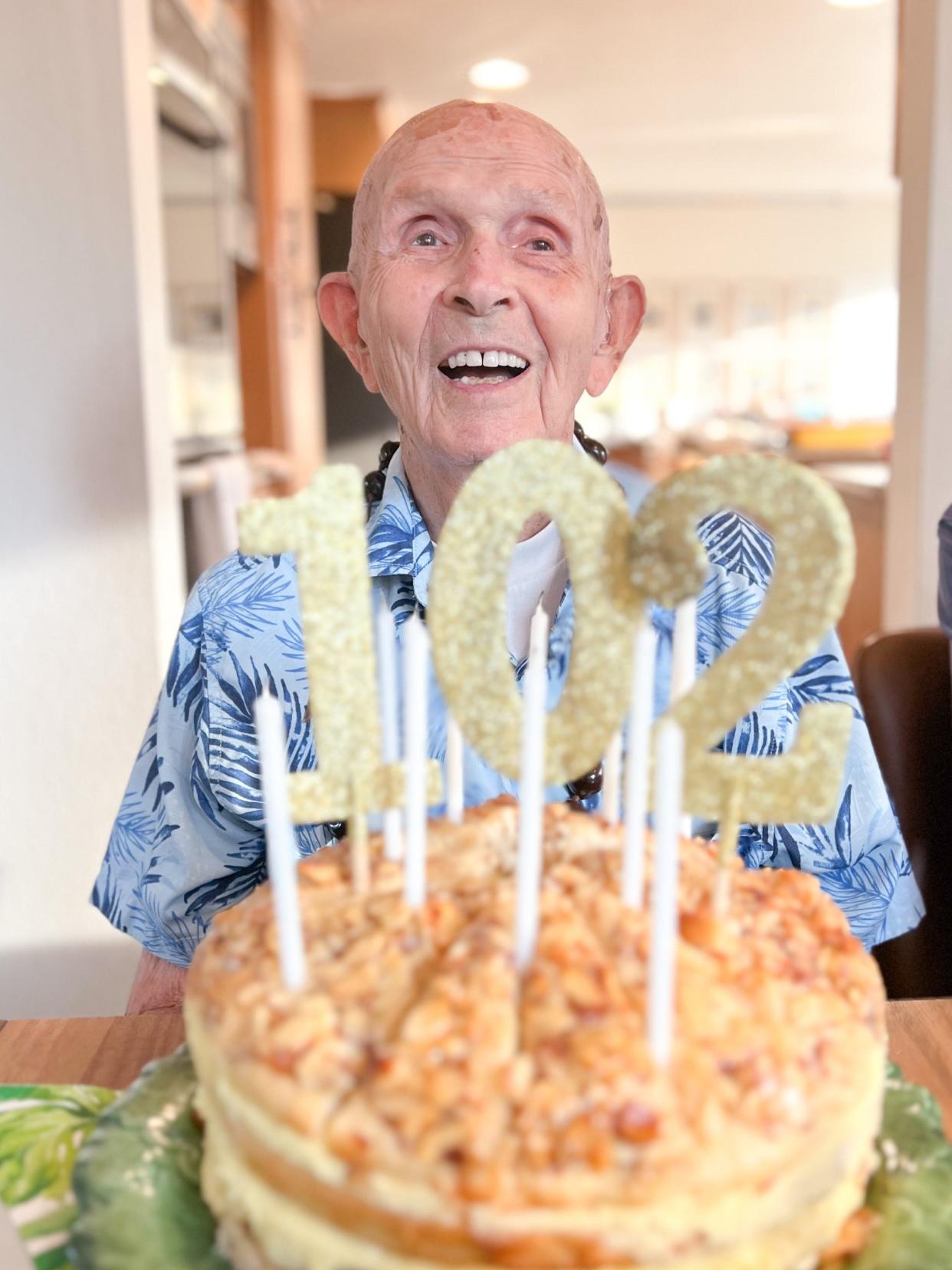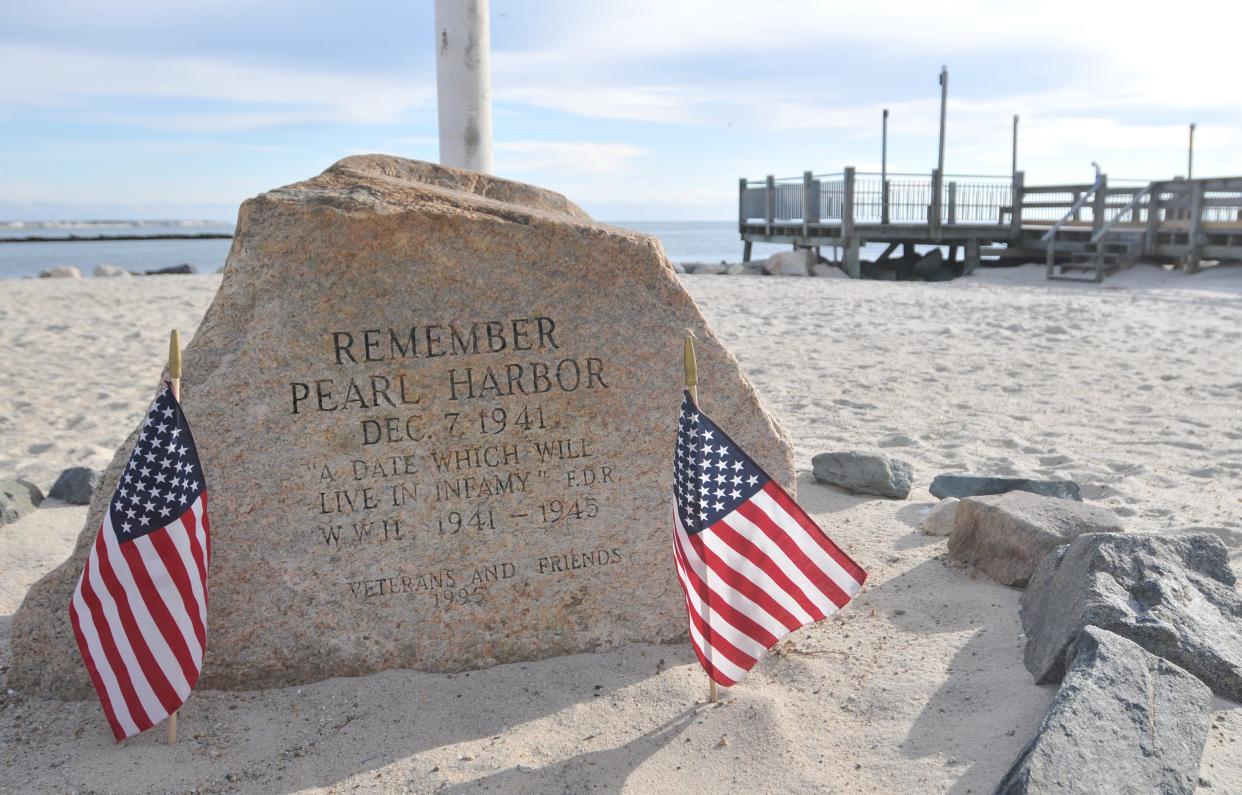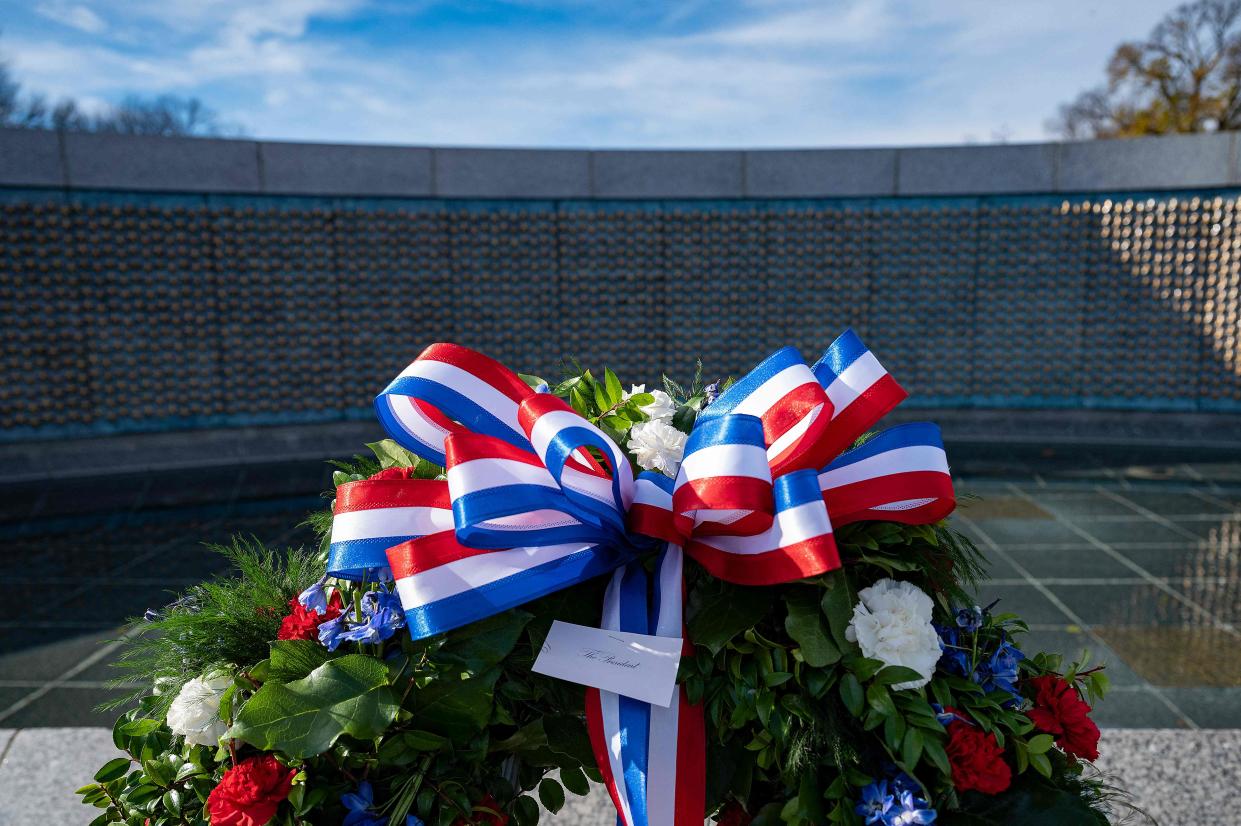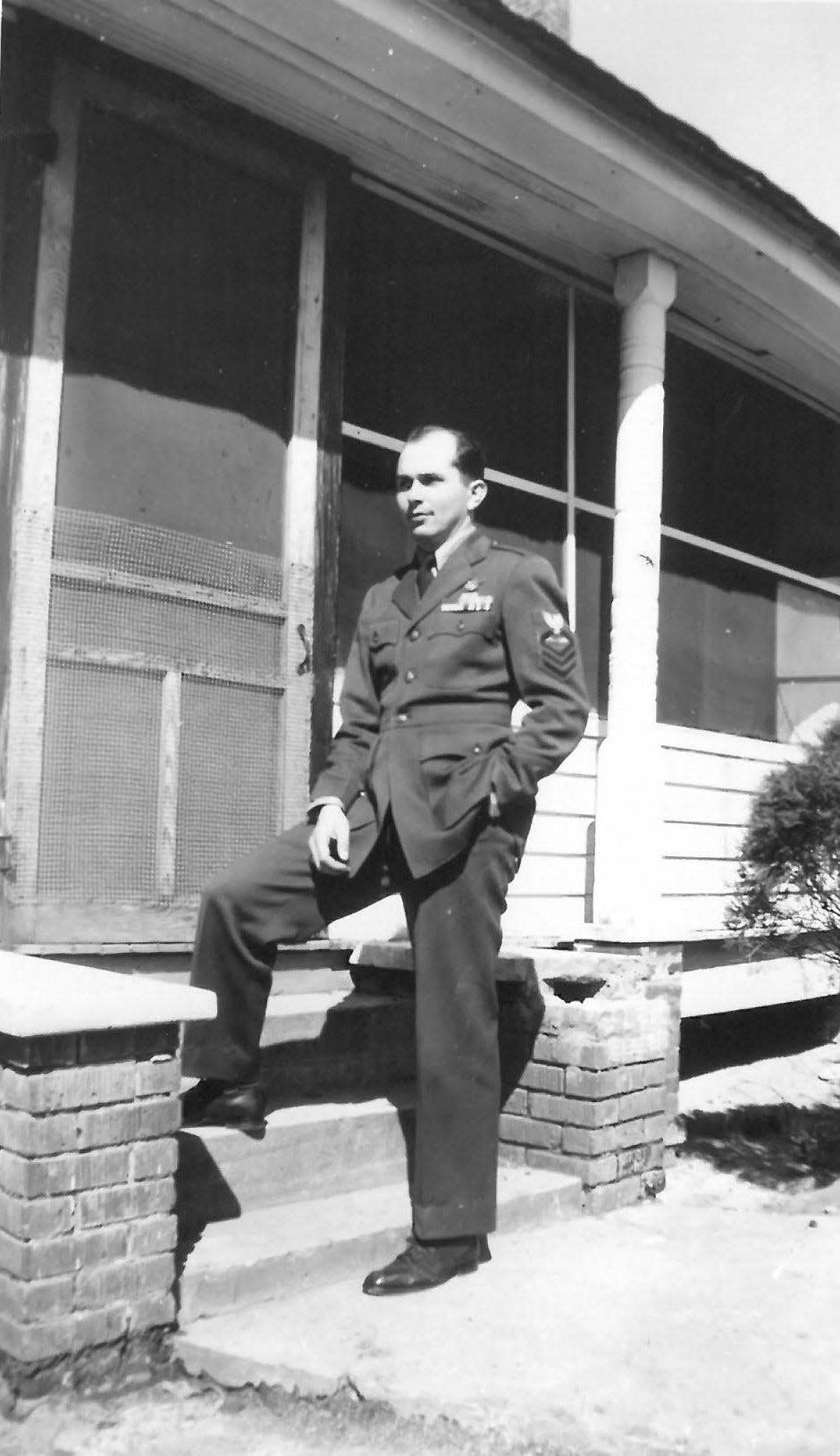Richard Higgins, one of the last remaining survivors of Pearl Harbor attack, dies at 102
Over 2,000 people died during the Japanese surprise attack on Pearl Harbor and Richard C. Higgins, one of the last remaining survivors who witnessed that tragic day unfold, recently passed away at the age of 102.
Higgins died of natural causes on Tuesday, Angela Norton, his granddaughter, told the New York Times. The veteran died at Norton's home in Bend, Oregon where he had been living, she told the outlet.

On an Instagram page named @quarantine_chats_with_gramps, Higgins would relive his time as a radioman stationed at the Pearl Harbor naval base on Dec. 7, 1941. On that day, 2,403 U.S. personnel, including 68 civilians, were killed by the airstrike ultimately leading to the country declaring war on Japan, according to the National WWII Museum.
In the Instagram post from May 11, 2020, Higgins talks about how explosions of the bombs going off "all around" woke him up the day of the attack and how the first bomb hit the parking area and then a hangar.
"I got on some shoes and pants and headed down for the hangar," Higgins recalled when he first woke up.

Higgins 'moved planes away from ones that were on fire' during the Pearl Harbor attack
U.S. Marines held Higgins back during the first wave of the attack, the veteran said. Once the Marines let Higgins go, he then pushed planes away from each other as bombs dropped around him and gasoline hovered over his head during the second wave of the attack.
“I was moving planes away from ones that were on fire, because when the tanks exploded, they threw burning gas on the others,” he said.
Higgins "tried to get things squared away in the hangar area" for the remainder of the day, the veteran said in the social media post.

The radioman recalled not returning to his barracks for three days. During that time, he slept on a cot at the plane hangar and worked on “trying to get planes back into commission," according to the Instagram post.
Higgins also described his experience in a 2008 interview with the National Museum of the Pacific War. During the interview, he recalled jumping out of his bunk, running over to the edge of the lanai (the name for a covered porch in Hawaii) and seeing a plane fly right over his barracks.
The plane had “big red meatballs on it,” Higgins said, about Japan’s rising sun insignia,
"There was no doubt what was happening in my mind," he said.
Higgins lived through the Great Depression, Dust Bowl
Higgins was born on a farm near Magnum, Oklahoma on July 24, 1921, according to the oral history interview with the National Museum of the Pacific War. In an Instagram post shared April 16, 2020, Higgins talks about living through the severe dust storms during the Dust Bowl in the 1930s and the Great Depression from 1929-1939.
The veteran described how dust and sand would darken the town and streetlights wouldn't switch on until the middle of the day, according to the social media post. He also recalled his father borrowing money to keep the farm animals fed.
“It was what you might call slim pickings,” Higgins said about living through the Great Depression.

Before joining the Navy in 1939, Higgins's first gig was at a woman's hat factory, according to the oral history interview. The U.S. Army didn't come into the picture until he heard an ad on the radio, so he bypassed his initial plan to go to radio and television school in Kansas City, to go into the Navy and train to become an aviation mechanic at the time, the veteran said in the interview.
"The tuition for that was $300, and I never acquired $300, and plus I would have to live also, so I joined the Navy," Higgins said.
While stationed at Pearl Habor, Higgins went out on a patrol mission in mid-October 1941, but when he returned to base, the Japanese had attacked, he said in the oral history interview. On the morning of the airstrike, Higgins said the seaplane he returned to the base in was gone and replaced by a crater 7 feet deep and 20 feet across.
'Gramps went home,' Instagram account says
A post was shared on the @quarantine_chats_with_gramps Instagram on March 19 announcing Higgins' passing.
"Gramps went home to be with Jesus this morning," the post said. "He was a humble, generous, funny and loving husband, father, grandfather, great grandfather and friend. This community has celebrated and honored him and we are forever grateful for the impact he has made on all of us. At 102 years old, we have lost a precious part of history but because of his belief in Jesus we know that this is not the end. We can’t wait to see you again. Always and forever, we love you Gramps."
After retiring from the Navy in 1959, Higgins worked as an aeronautics engineer, the New York Times reported. He married Winnie Ruth in 1944 while stationed in Florida, according to the outlet. Ruth passed away in 2004 at the age of 82.
Higgins is survived by a son, a daughter, two grandchildren and four great-grandchildren, Norton told the New York Times.
“He never thought that he was a hero; the heroes were those who didn’t come home,” Norton said. “But he wanted to make sure their stories continue to be told, and we remember what an incredible country we live in and what sacrifices they made for us to have our freedoms.”
Jonathan Limehouse covers breaking and trending news for USA TODAY. Reach him at JLimehouse@gannett.com
This article originally appeared on USA TODAY: Richard Higgins, Pearl Harbor attack survivor, dies at 102
